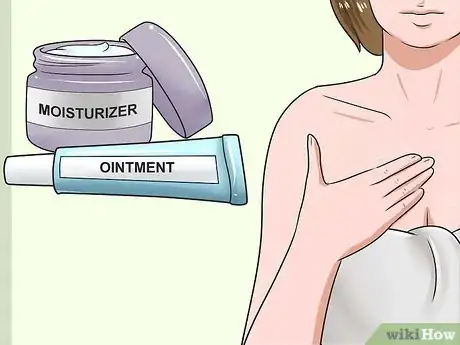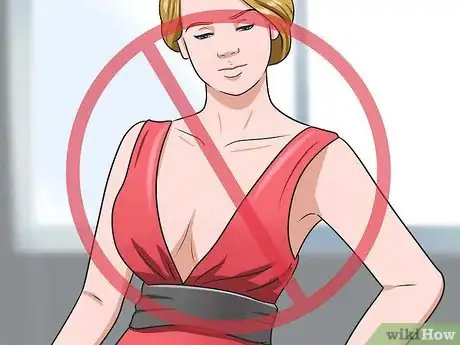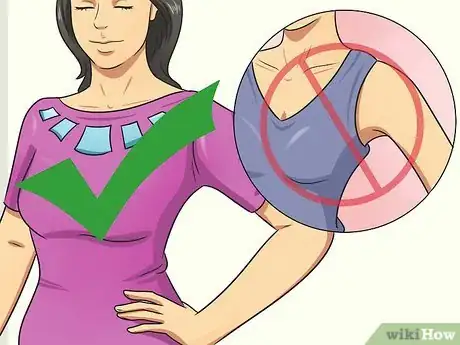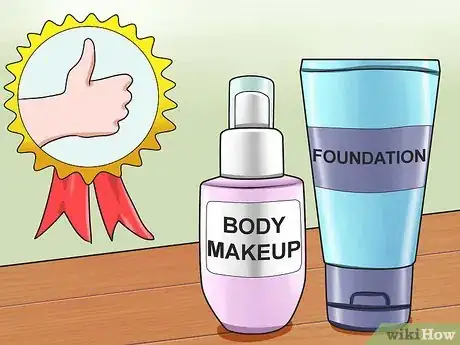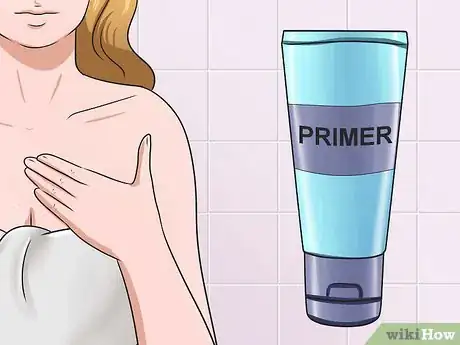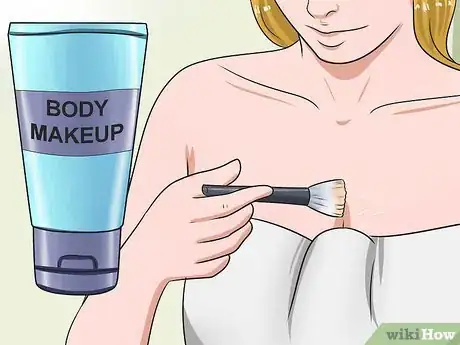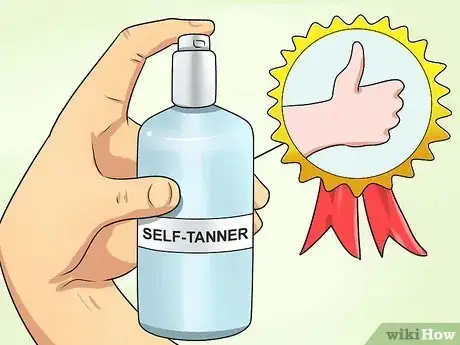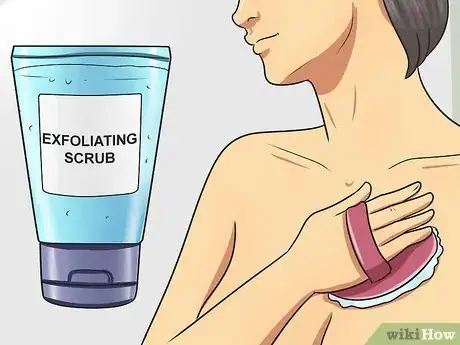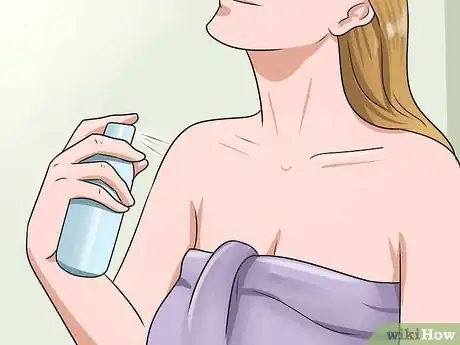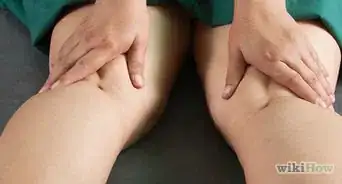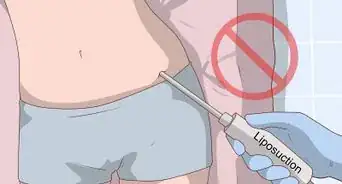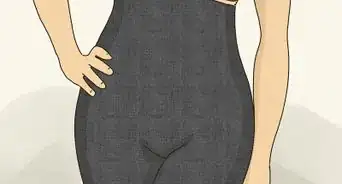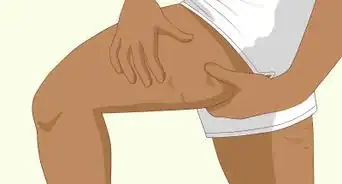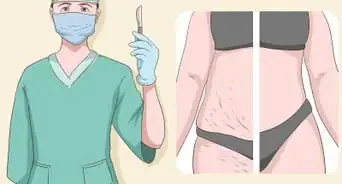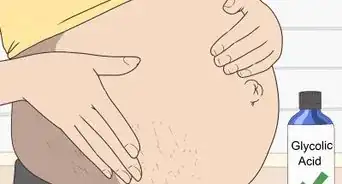This article was co-authored by Navid Malakouti, MD, FAAD. Dr. Navid Malakouti is a Board Certified Dermatologist specializing in cosmetic dermatology, dermatologic surgery, and medical dermatology. He treats patients of all ages for conditions like acne, rosacea, psoriasis, skin cancer, botox, fillers, lasers, and chemical peel. Dr. Malakouti is a Diplomate of the American Board of Dermatology, Fellow of American Academy of Dermatology, American Society for Dermatologic Surgery, and American Society for Laser Medicine and Surgery, and a member of the Skin of Color Society. He holds a BS in Biochemistry and Cell Biology from The University of California, San Diego and an MD from The Virginia Commonwealth University School of Medicine. He completed his Dermatology residency in Washington D.C. at Howard University, VA Medical Center, Children's National Hospital, and the National Institutes of Health.
There are 12 references cited in this article, which can be found at the bottom of the page.
This article has been viewed 108,164 times.
Most people will get stretch marks at some point in their lives. Stretch marks are actually tiny scars that form when your body grows too quickly for your skin to keep up. Common causes of stretch marks are growth spurts, rapid weight gain, pregnancy, and weight lifting. Teenagers are especially prone to stretch marks, since their bodies are rapidly changing. If you feel self-conscious about your stretch marks, there are many things you can do to make them look less obvious.
Steps
Preventing and Reducing Stretch Marks
-
1Use moisturizers and skin ointments. Moisturizers help your skin to stay soft and hydrated, reducing discomfort and possibly preventing stretch marks from occurring. Avoid alcohol-based products, which will dry out your skin.[1] Look for creams that contain vitamin E, hyaluronic acid, and onion extract, which may promote skin healing.[2]
-
2Eat healthy. Maintain a balanced diet full of fruits and vegetables. Your skin needs vitamins and minerals to stay healthy.
- Creams containing retinoids might prevent or reduce the appearance of stretch marks.[3]
- Stay hydrated by drinking water and avoiding diuretics like coffee. Hydration will promote skin elasticity and may prevent stretch marks.
Advertisement -
3Talk to a dermatologist. If your stretch marks are especially severe, you may want to see a doctor about possible treatments and to rule out any medical problems that may be causing them.[4] [5]
- Ask your dermatologist about laser treatment if your stretch marks really bother you.[6]
- Tretinoin cream, also known as Retin-A, is sometimes prescribed for new stretch marks to promote healing through an increase in collagen production. This drug should not be used by women who are pregnant or breastfeeding, as it may cause birth defects or be harmful to a newborn.[7]
Dressing to Cover Stretch Marks
-
1Avoid low-cut necklines. A common place stretch marks occur during puberty is the cleavage area right between developing breasts. This spot is easy to hide with inconspicuous clothing simply by wearing normal tops cut a little higher. During cooler months, you can look stylish in turtlenecks.
- Sometimes it's hard to tell how a piece of clothing will fall on your body. If you're specifically looking for a top to hide stretch marks, be sure to try it on first before buying.
-
2Wear tops with sleeves. Stretch marks are also very common at the armpit and upper arms, especially if you exercise or build up muscle in that area. Avoid tank tops and spaghetti straps, which would draw attention to your stretch marks.
- When trying on tops with short sleeves, be sure to raise your arm up high in front of a mirror. Sleeves that may look fine with your arms at your sides may ride up, exposing your stretch marks.
-
3Find the right accessories. In cooler weather, wear scarves and shawls to cover your stretch marks. Avoid wearing jewelry over bare skin near your stretch marks. The shine from the jewelry will draw eyes to the problem area. Instead, wear your most eye-catching pieces away from your chest, such as on your ears and wrists. If you carry a purse or handbag, pick either a clutch or one with long straps. A short purse held near your armpit will bring attention to your chest area.
-
4Pick out the right swimwear. While skimpy bathing suits are popular, there are still plenty available that will cover problem areas on your chest. If you want to avoid looking too modest, find a swimsuit that hides your stretch marks while flaunting another area that you're proud of, such as a crop top. Another fashionable look is to use mesh insets to camouflage blemishes while still showing your skin.[8]
Using Makeup to Hide Stretch Marks
-
1Choose the right body makeup. Look for a brand of foundation specifically marketed as a body makeup for covering stretch marks, tattoos, scars, and/or blemishes. Find a body makeup that matches as closely as possible to your chest's skin tone. Because of clothing and the way sunlight hits the body, most people's chests are a few shades lighter than their faces and forearms.
-
2Prepare the area where you'll be putting the makeup. Make sure your skin is clean and dry. Massage in a little moisturizer. To make your makeup last longer, work some makeup primer into your skin. The primer will also help to smooth out your skin, reducing the appearance of stretch marks.[9]
-
3Fill in your stretch marks with body makeup. You can use either either your fingers or a narrow makeup brush for more control. Blend well until the stretch marks fade into the surrounding skin.
- If your stretch marks are particularly deep or dark, try adding some concealer over top of the body foundation.
-
4Brush on a little setting powder. Use a wide brush or powder puff to gently dust on the powder. Use a clean brush to wipe off any excess. Setting powder helps to keep your makeup from rubbing off, something even more likely to occur with body makeup compared to face makeup.[10]
Applying Self-Tanner
-
1Choose the right self-tanner. There are a variety of self-tanners on the market. Pick one close to your chest's normal skin tone or one meant to give only a light tan.
- Pregnant women should not use spray-on tanning products that contain dihydroxyacetone (DHA). While this chemical is safe for use on skin, it may be dangerous when inhaled. Use products that come as a lotion or mousse instead.[11]
-
2Exfoliate your skin in the area where you will apply the self-tanner. Use an exfoliating product if you wish. Scrub lightly with a washcloth or loofah. Pat dry with a towel.[12]
-
3Apply the self-tanner as directed. If your stretch marks are dark, apply the tanner to the surrounding skin to even things out. If your stretch marks are light, focus the tanner on the marks themselves. Blend the tanner using your fingers or a washcloth you don't mind staining.[13]
-
4Allow the self-tanner to dry. Wait at least 10 minutes before putting on any clothing. Be sure to scrub your hands clean immediately to avoid making a mess. Wait another six or more hours before bathing or swimming. Re-apply the tanner daily until your stretch marks are invisible.[14]
References
- ↑ https://healthunlocked.com/britishskinfoundation/posts/130071168/top-4-tips-to-reduce-stretch-marks
- ↑ http://www.webmd.com/baby/features/stretch-marks?page=2
- ↑ Navid Malakouti, MD, FAAD. Board Certified Dermatologist. Expert Interview. 19 July 2021.
- ↑ Navid Malakouti, MD, FAAD. Board Certified Dermatologist. Expert Interview. 19 July 2021.
- ↑ https://www.boystownpediatrics.org/KnowledgeCenter/healtharticles/Pages/StretchMarks.aspx
- ↑ Navid Malakouti, MD, FAAD. Board Certified Dermatologist. Expert Interview. 19 July 2021.
- ↑ http://www.mayoclinic.org/diseases-conditions/stretch-marks/basics/treatment/con-20032624
- ↑ http://www.huffingtonpost.com/2014/05/21/swimsuit-shopping-guide-body-type_n_5353018.html
- ↑ http://www.huffingtonpost.com/2015/01/16/what-is-makeup-primer_n_6463190.html
- ↑ http://www.totalbeauty.com/content/slideshows/fake-perfect-body-makeup
- ↑ http://www.babycentre.co.uk/x562989/is-it-safe-to-use-fake-tans-during-pregnancy
- ↑ https://www.aad.org/dermatology-a-to-z/health-and-beauty/general-skin-care/how-to-apply-self-tanner
- ↑ http://www.newhealthguide.org/How-To-Cover-Up-Stretch-Marks.html
- ↑ https://www.aad.org/dermatology-a-to-z/health-and-beauty/general-skin-care/how-to-apply-self-tanner
- ↑ https://www.boystownpediatrics.org/KnowledgeCenter/healtharticles/Pages/StretchMarks.aspx
- ↑ http://www.collegefashion.net/beauty-and-hair/sweat-proof-waterproof-makeup-for-summer
- ↑ http://www.mayoclinic.org/diseases-conditions/stretch-marks/basics/treatment/con-20032624
